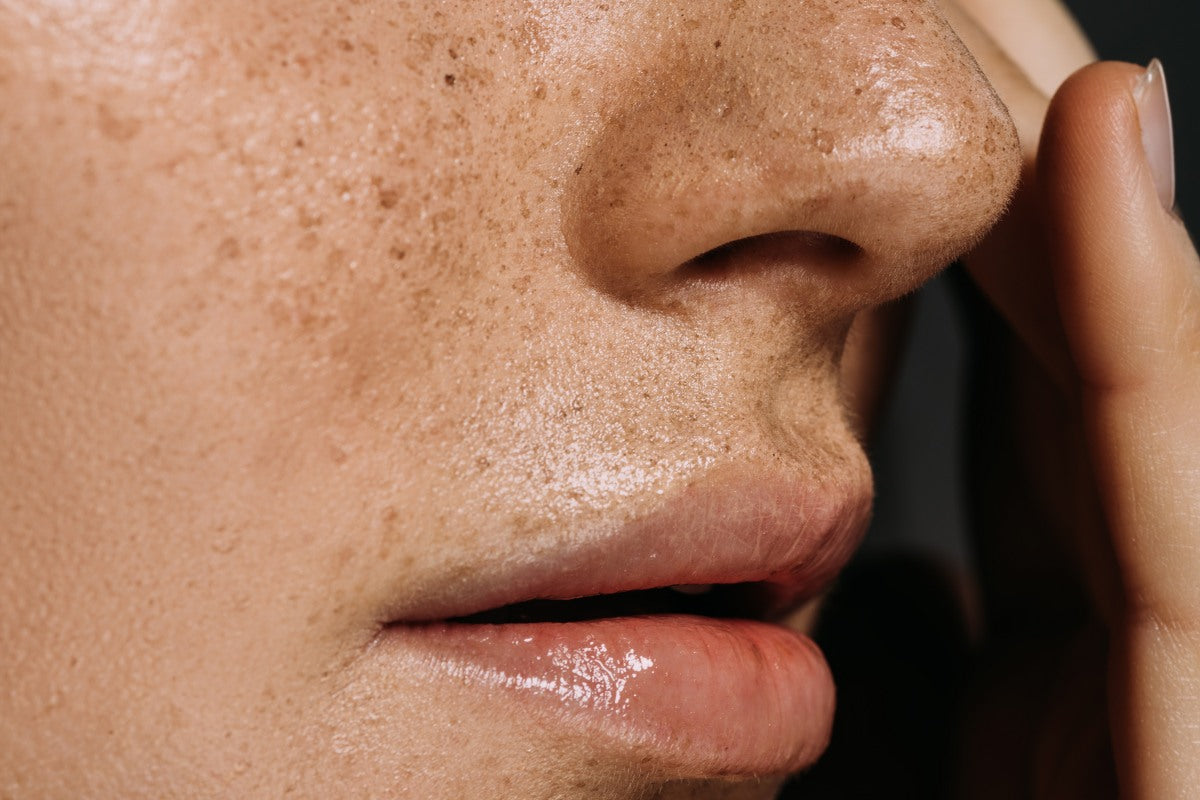Blog > All
How Does Infrared Light Work
Written by Our Editorial Team
6 min read
00
DAYS D00
HOURS H00
MINUTES M00
SECONDS S

How does infrared light work when it comes to your skin? This is one of the most common questions from people exploring advanced, non-invasive treatments.
Infrared light is more than just a wellness trend. In dermatology, it has been studied for its ability to stimulate energy production, enhance circulation, and encourage collagen synthesis.
These mechanisms explain why infrared therapy now plays a central role in both clinical treatments and FDA-cleared at-home devices, such as Qure's Q-Rejuvalight Pro LED face mask.
For skincare-literate consumers who want results without invasive procedures, understanding the science behind infrared light offers both clarity and confidence.
What this article covers:
Infrared light is part of the electromagnetic spectrum, invisible to the human eye but deeply absorbed by the body's tissues.
Unlike ultraviolet rays, which can damage skin, infrared light delivers energy that supports repair and regeneration. This makes it particularly appealing for sensitive or reactive skin types who want safe, results-driven therapies without harsh side effects.
Infrared spans three ranges, each with unique therapeutic properties.
Dermatologists and device engineers carefully calibrate treatments to optimize wavelength and depth of penetration for skin health.

Infrared light spans wavelengths from about 700 nanometers (nm) to 1 millimeter (mm), and scientists divide this range into near-infrared (NIR), mid-infrared (MIR), and far-infrared (FIR).
Each band interacts with the body differently, which is why infrared is used in both medical and cosmetic therapies.
Near-infrared (NIR) penetrates the skin and underlying tissue most deeply.
It is capable of reaching cell mitochondria, where it stimulates energy production in the form of adenosine triphosphate (ATP). This process, known as photobiomodulation, supports collagen synthesis, repair, and skin rejuvenation.
Mid-infrared (MIR) wavelengths penetrate less deeply than NIR but still interact with soft tissue, muscles, and joints.
Because water molecules absorb MIR strongly, these wavelengths are often used in therapeutic applications for circulation, muscle relaxation, and pain relief.
In skincare, MIR is less commonly targeted but can complement NIR by supporting deeper tissue comfort and function.
Far-infrared (FIR) produces the longest wavelengths in the infrared spectrum, which are absorbed at or just below the surface of the skin.
Instead of directly stimulating mitochondria, FIR generates gentle thermal effects that increase blood flow, support lymphatic drainage, and promote relaxation.
This is why FIR technology is commonly seen in saunas and warming devices rather than targeted skincare masks.
The benefit of infrared lies in its ability to bypass the skin's surface and reach deeper layers. Once absorbed, it interacts with cellular chromophores – molecules that respond to light.
The reaction, known as photobiomodulation, initiates a cascade of biological effects that translate into visible skin improvements and healthier tissue function.

Once infrared light is absorbed by the skin and underlying tissue, it triggers a cascade of cellular and physiological responses.
Infrared light excites cytochrome c oxidase, a critical enzyme in mitochondrial function. The result is greater ATP output, which allows cells to carry out repair with higher efficiency.
This boost is why users often ask, “How long does it take for red light therapy to work?” While results vary, consistent treatments accelerate improvements in skin tone and elasticity over several weeks.
Infrared exposure triggers the release of nitric oxide, a natural vasodilator. This widens blood vessels, improves circulation, and enhances nutrient delivery to the skin.
Better blood flow supports oxygenation, which is essential for skin clarity, hydration, and even healing after procedures.
Inflammation contributes to both visible skin concerns and underlying discomfort. Infrared light has been shown to calm inflammatory pathways, which explains its use in pain management as well as aesthetic treatments.
For sensitive skin users who react to topical actives, infrared offers a safe, non-chemical option to support calm, balanced skin.
Collagen is the structural protein responsible for firmness and elasticity.
As we age, natural production declines, leading to fine lines and laxity. Infrared light stimulates fibroblast activity, helping replenish collagen stores.
Devices like the Q-Rejuvalight Pro LED face mask deliver consistent doses that are dermatologist-approved for at-home use, bridging the gap between clinical treatments and daily convenience.
While much of infrared's benefit comes from photobiomodulation, thermal energy also plays a role. Gentle heating increases blood flow, supports lymphatic drainage, and relaxes tense tissue.
Unlike saunas or aggressive heat-based devices, Qure's calibrated systems ensure comfort and safety, even for reactive skin types.

Results from infrared light therapy depend on wavelength, exposure time, and frequency.
Consistency is key. Just as exercise builds endurance over time, repeated light therapy sessions optimize cellular adaptation.
Qure's devices are engineered with this principle in mind, offering dermatologist-approved protocols that balance efficacy with skin protection.
The Q-Rejuvalight Pro LED Mask delivers calibrated wavelengths at dermatologist-approved, FDA-cleared intensities, so results build safely over time without risking irritation from overuse.
Lifestyle factors also matter. Hydration, overall health, diet, sleep, and stress levels can influence how quickly skin regenerates in response to therapy.
Individual biology adds another layer. Age, hormone balance, and baseline collagen density determine how fast visible changes appear.
Some users notice improvements in brightness and tone within weeks, while others require steady treatments over months to see firmness and textural shifts.
This is why answering how long does red light therapy last depends not only on the device but also on adherence, skin type, and overall wellness.
So, how does infrared light work? At its core, it energizes cells, supports circulation, reduces inflammation, and stimulates collagen.
For skincare, this means firmer, brighter, and healthier skin without downtime.
Qure Skincare's FDA-cleared and dermatologist-approved devices bring clinical science into daily routines. With rigorous testing for safety and skin compatibility, Qure empowers you to enjoy visible results from the comfort of home.
Modern skincare should be intelligent, safe, and effective – and infrared light, paired with Qure's advanced red light mask, makes that possible.
Read more about targeted skincare topics:
Most Popular Posts